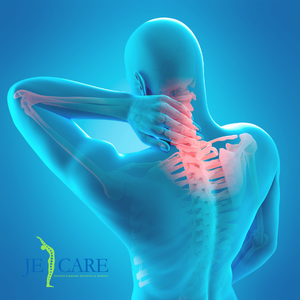
16 Dec Physiotherapy Treatment for Neck Pain
There is no recognized clinical definition for neck pain. Non-specific neck pain, also known as cervical spondylosis, is the most prevalent form. It is described as “pain having a postural or mechanical foundation.”Two-thirds of people have experienced neck pain at some point in their lives, which is a rising trend worldwide. With a “mean point prevalence of 7.6% and mean lifetime prevalence of 48.5%,” the prevalence of neck discomfort varies significantly between studies. According to most research, neck pain is more common in women, those who experience anxiety or depression, and those who work in offices where the keyboard and screen are positioned incorrectly.
The 7 most common types of neck pain are muscular pain, muscle spasm, headache, facet joint pain, nerve pain, referred pain, and bone pain. Each has a unique cause, diagnosis, and course of treatment.

Goals of Physiotherapy for Neck Pain-
The following are the goals of Physiotherapy:
1. minimize pain and stiffness
2. improve the range of motion in the neck and head
3. Develop the neck’s supporting muscles’ flexible strengthening
4. Create plans to stop pain from reoccurring
Physiotherapy may be important for enhancing neck posture and function for daily activities, even if pain cannot be fully removed.
Types of Physiotherapy Treatment for Neck Pain
There are two common types:
1. Passive Physiotherapy– It includes performing therapies without the patient engaging in any effort. There are many different treatment options, including the use of cold packs, heat therapy, massage therapy, ultrasound, electrotherapy, and others. Passive physical therapy aims to aid in the reduction of pain and swelling.
2. Active Physiotherapy– This requires the person to move their own body through stretches and exercises. Strengthening and extending the neck muscles may make them less uncomfortable and better able to hold the head upright, relieving pressure on the cervical spine. Some of the common types are:
a. Neck stretches and exercises
b. Core and back strengthening
c. Aerobic activity
d. Aquatic exercise
Efficacy of Physiotherapy
Numerous research has looked into the possibility that physiotherapy can reduce the pain caused by the spine, including that in the neck or lower back. The benefits of physiotherapy function in lowering neck pain and enhancing range of motion are suggested by moderate to strong evidence in the most recent medical literature. Physical therapy has been shown in certain studies to have even greater therapeutic advantages when paired with other treatment modalities like aerobic exercise.

Get started today with £15.00 OFF your first appointment.
Book an initial assessment quoting JECB1122
